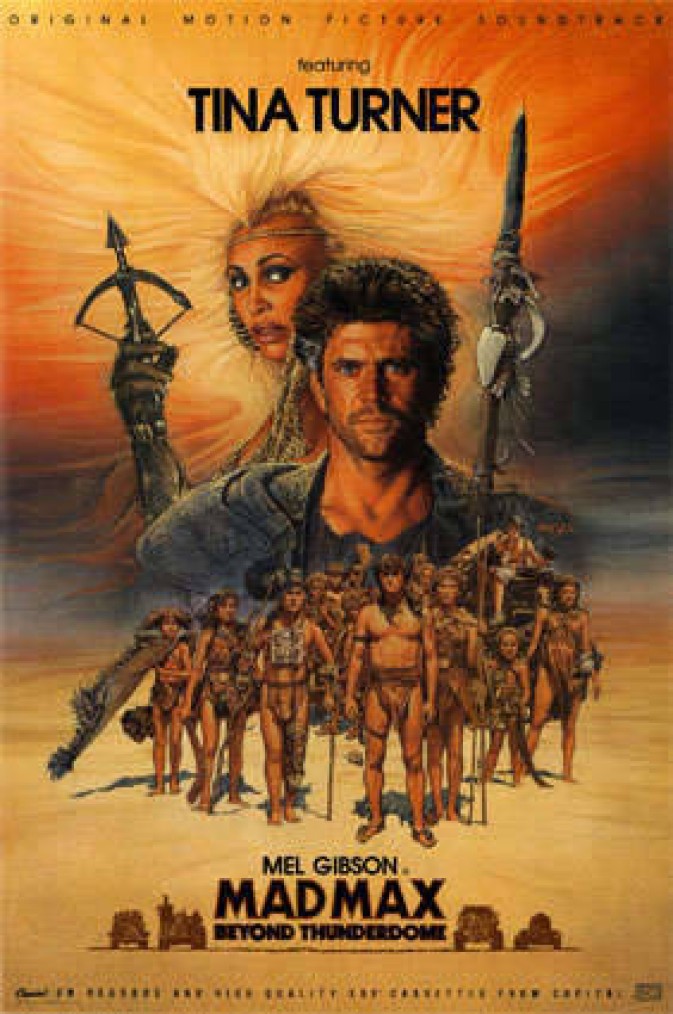Mad Max III, Mad Max: Beyond Thunderdome.
Mad Max III, 'Mad Max: Beyond Thunderdome', was released in 1985.
George Miller "was committed to making it for Byron's sake as they had been working on various ideas for the film before he died. George contacted Terry Hayes to help write the screenplay. Terry Hayes had written the Mad Max novelisation and then also the Mad Max 2 screenplay (Terry Hayes pitched his idea for the third film to Mel Gibson as "Mate, think of it as Jesus Christ in Leather Pants!". The third film once again took the character of Max in a totally new direction and was once again a hit with audiences."
Miller became part of a movement dubbed the "Australian New Wave" by the press. They were a group of filmmakers and performers who emerged from "Down Under" at about the same time in the early 1980's and found work in other parts of the world. Other members included actors Mel Gibson and Judy Davis and directors Peter Weir and Gillian Armstrong.
'Writer and film critic Adrian Martin in a recent book The Mad Max Movies (Currency Press and ScreenSound Australia, 2003)argues that in the Mad Max movies George Miller "draws less from his immediate predecessors in independent '70s cinema (such as Martin Scorsese, Robert Altman or Terrence Malick) than from a handful of seemingly classical directors: Alfred Hitchcock, Howard Hawks, Fritz Lang, Orson Welles, Sam Fuller, Jacques Tourneur, Raoul Walsh, Budd Boetticher and Robert Aldrich (whose Kiss Me Deadly [1955] obviously provides inspiration for the character of the Greek-Australian car mechanic played by Nick Lathouris).
But in the borrowing and adapting of tropes from these masters, their formalist and modernist potentiality is heightened, brought into sharp relief. In this crucial sense, the Mad Max films are essays in film criticism, history and theory: they reinvent, help us to see anew, their forebears, and action-horror directors can do this no less than the critics-turned-auteurs of the French New Wave."
